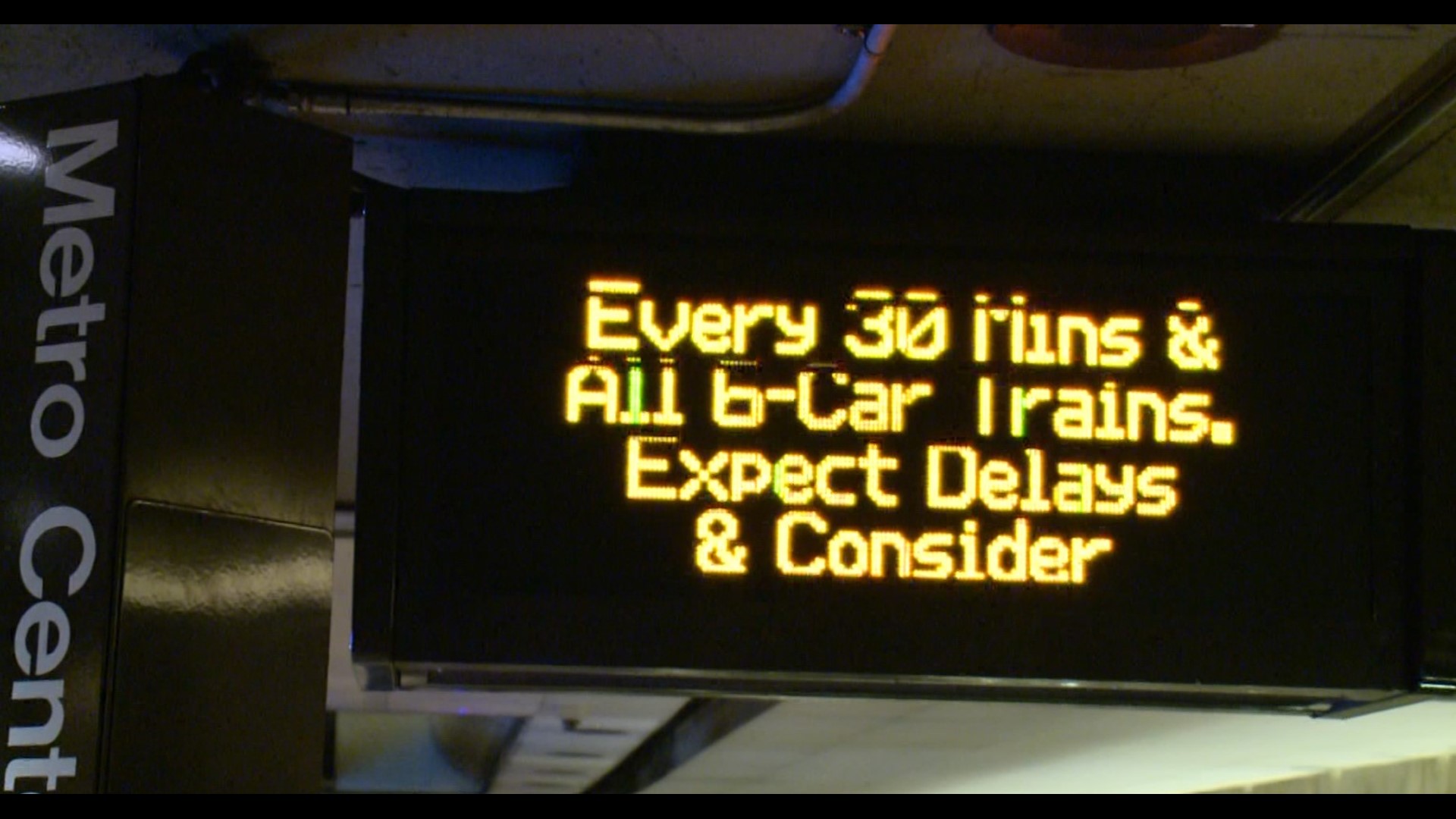WASHINGTON — Editor's Note: The above video says that all lines except the red line will run every 20-30 minutes. This is incorrect. All lines except the red line will run 30 to 40 minutes. The red line will run every 15 to 20 minutes.
Metro will continue to run on a reduced schedule until Oct. 31 as they continue to inspect almost 60% of its rail cars following a train derailment that was linked to malfunctioning wheels on its newest trains.
This means trains on the Red Line will run every 15 to 20 minutes and every other line will run every 30 to 40 minutes through at least Halloween. Silver Line service will continue to operate between Wiehle-Reston East and Federal Center Southwest only.
Metro is encouraging riders to seek alternate routes such as their bus service in the meantime.
Metro officials said they do not have a timeline on when service will be fully restored with all 7000 series trains back in service. They are working with Kawasaki to inspect the rail cars removed from service and plan to emphasize four top priorities to ensure rider safety, according to Metro General Manager and Chief Executive Officer Paul Wiedefeld:
- Inspection frequency
- Testing
- Car isolation
- Remobilization
Wiedefeld said they are looking to get their older rail cars, series 2000, 3000 and 6000, fully inspected to possibly put them out while they continue to fix the 7000 series cars.
Metro said they currently have 268 railcars available for service, a combination of the 2000-, 3000- and 6000-series railcars. They are working to return more railcars into service each week. Some of these cars have been in storage or are undergoing repairs and will need to be inspected and maintenance performed prior to resuming operations. Metro’s railcar mechanics and technicians are working to do this as quickly and safely as possible.
Currently available of the 2000 and 3000 series – 246 available for service out of a fleet of 350. Of the 6000 series – 22 are available for service out of a fleet of 180.
Of those, keep in mind that 10-15% of available railcars are typically out of service due to routine maintenance and other issues on any given day.
Wiedefeld added that although bus service is already at its max, Metro plans to provide more buses and adjust schedules where they can to give people another alternative. WMATA is also working with local governments to see if they can be of any assistance.
Wiedefeld said Metro's main priority is to get the service back up in the safest manner for the region.
As of Friday, Metro officials said they have noticed a slight drop in ridership. They usually average 186,000 riders daily but noticed a decrease of about 20,000 since the derailment.
All this is happening because the National Transportation Safety Board (NTSB) found defects in several of the 7000 series railcars while investigating the derailment of a Blue Line railcar (train 407) on Oct. 12. During that incident, almost 200 people were safely evacuated from a derailed Metro Blue Line train near Arlington Cemetery.
While investigating the derailment, NTSB found that an axle of the railcar that derailed was "out of compliance with the 7000 Series specifications for the wheel and axle assembly," according to an order issued by the Washington Metro Safety Commission (WMSC).
The same problem was discovered in other 7000 series railcars that were not involved in the derailment, according to NTSB.
During a news conference Monday morning, NTSB said they found evidence that the Blue Line rail car derailed and rerailed at least twice before it finally got stuck in the tunnel before the Arlington Cemetery. They believe there could have been more derailments on the days leading up to the incident.
NTSB said investigators found broken sections of the brake disks along the route the Blue Line took that day. This has led them to believe the train derailed and rerailed several times between Franconia, Largo and Arlington Cemetery.
Sign up for the Get Up DC newsletter: Your forecast. Your commute. Your news.
Sign up for the Capitol Breach email newsletter, delivering the latest breaking news and a roundup of the investigation into the Capitol Riots on January 6, 2021.

